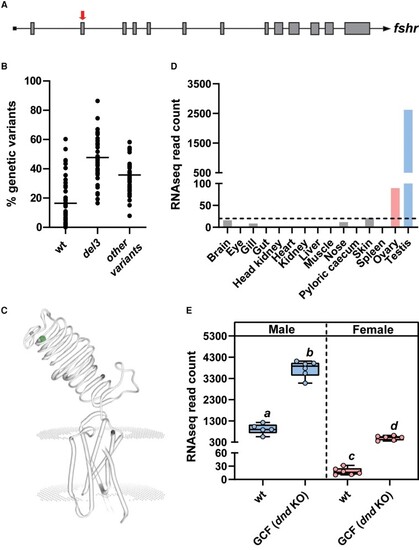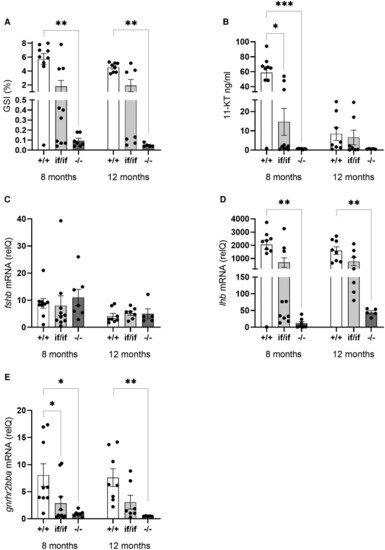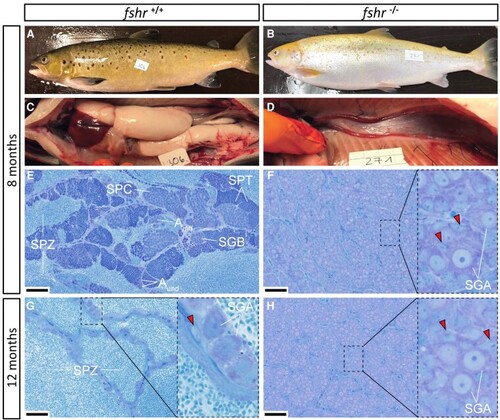- Title
-
Loss of Fshr prevents testicular maturation in Atlantic salmon (Salmo salar L.)
- Authors
- Andersson, E., Schulz, R.W., Almeida, F., Kleppe, L., Skaftnesmo, K.O., Kjærner-Semb, E., Crespo, D., Fjelldal, P.G., Hansen, T.J., Norberg, B., Edvardsen, R.B., Wargelius, A.
- Source
- Full text @ Endocrinology
|
|
|
Gonadosomatic indices (GSI; A), plasma 11-ketotestosterone (11-KT; B), pituitary |
|
External appearance, macroscopic testis anatomy and histological sections of testes from mature wild-type control ( |



